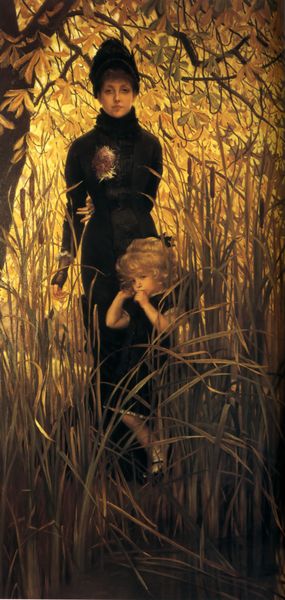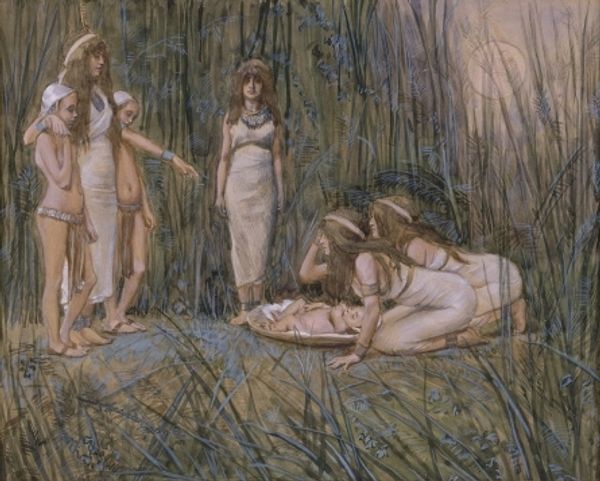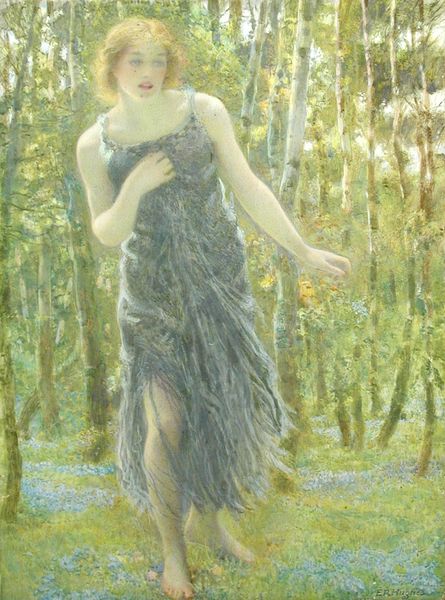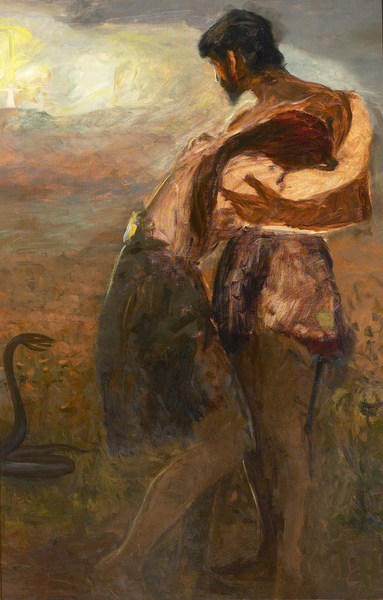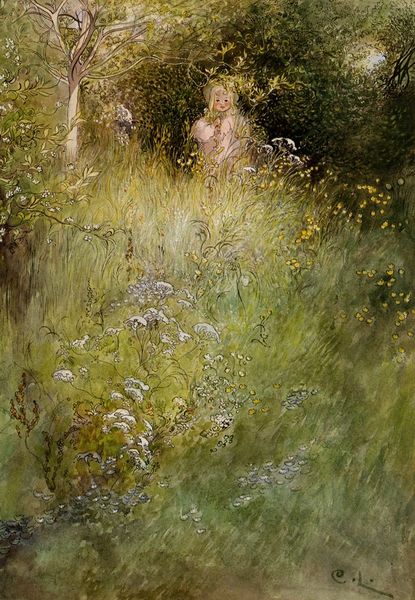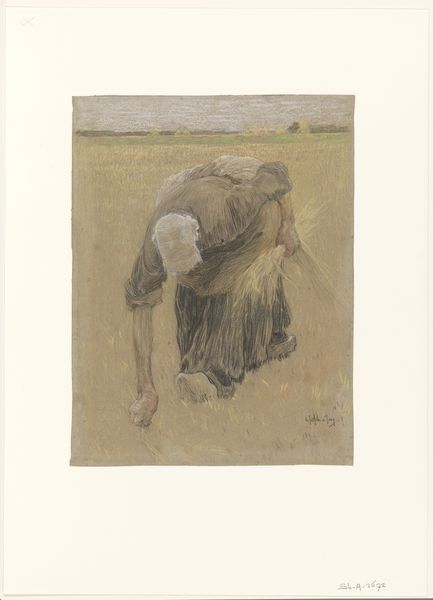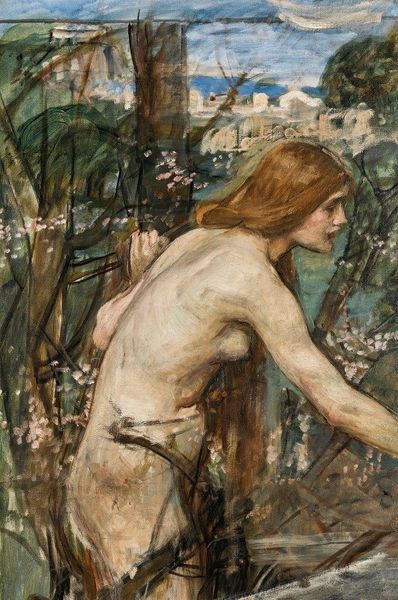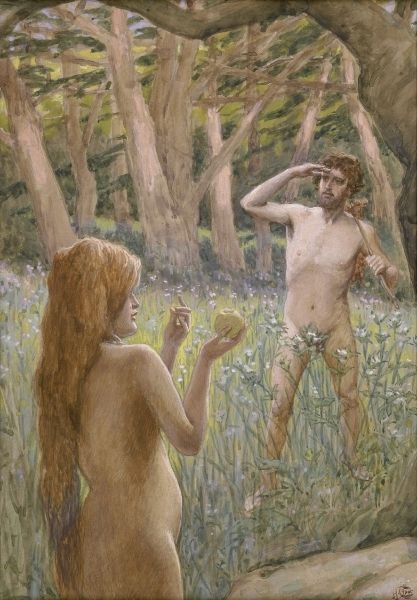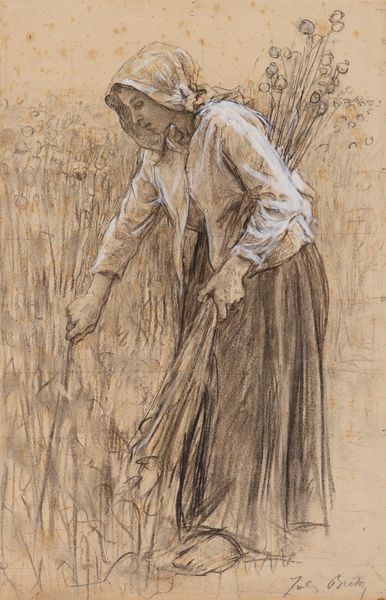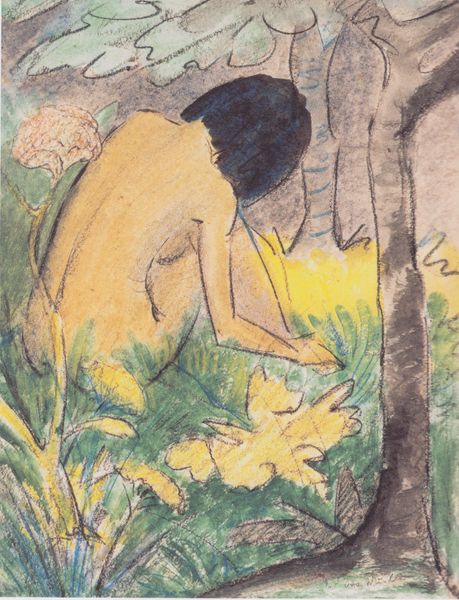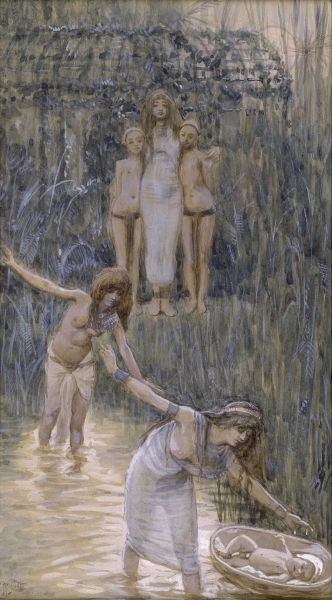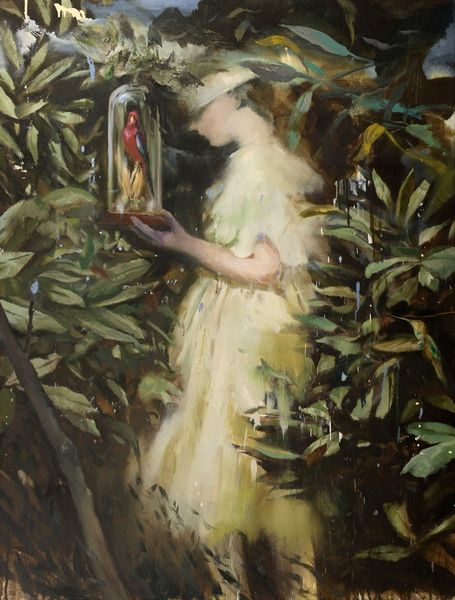
Dimensions: 25.2 x 12.4 cm
Copyright: Public domain
Curator: James Tissot, known for his narrative paintings that capture both historical and contemporary scenes, painted this watercolor entitled "Moses Laid Amid the Flags" in 1902. It presents a pivotal moment from the Book of Exodus. Editor: It's funny how a painting about such a heavy moment, filled with desperation and a bit of hope, can feel so… dreamy. Like looking through a sepia-toned memory, that circle up there seems almost moon-like, bathing everything in this unreal light. Curator: That "moon" actually emphasizes the symbolic weight of the moment—Tissot underscores the divine observation of the unfolding rescue, while reflecting the cultural conditions, or perhaps Tissot’s perception of conditions, when depicting biblical scenes at the fin-de-siecle. Notice the composition too: it isn’t just the central event that matters, it's how that event has its setting within the larger political circumstances that dictate why baby Moses had to be hidden amongst the flags. Editor: Right, like the river wasn’t just a hiding spot, but this space where hope and fear mingle—all because of Pharaoh's decree. Makes you think, what spaces today are like that river, you know? Full of hidden stories and risky possibilities. That watercolor softness somehow softens the horror while amping up the humanity, if that makes sense. Curator: It does. And Tissot’s strategic choice of watercolor lends a certain delicacy to the representation that may allow his works to gain acceptance. Think of how political imagery can shape public understanding, the delicate balance an artist strikes when revisiting such moments. The material qualities aren't just about aesthetics; they reflect and construct interpretations. Editor: The vulnerability in her stance really gets to me, and the fact that there’s still some quiet beauty—that feeling when you look up and you are not sure how everything is going to turn out but you realize it will be OK, in its own way—even in the face of all this danger makes it… incredibly hopeful. Even the way the rushes are drawn make the moment so peaceful and meditative, as though one needs to be very still to avoid detection and disaster. Curator: So in essence, while seemingly romantic and devotional, Tissot provides us with the perfect study in political analysis when representing and reinterpreting historical context. It’s so beautiful how something seemingly straightforward can be so powerful. Editor: Exactly! Tissot didn’t just illustrate a bible story; he inadvertently illustrated our ability to find meaning, connection, and yes, hope in the messiest chapters of our existence.
Comments
No comments
Be the first to comment and join the conversation on the ultimate creative platform.

